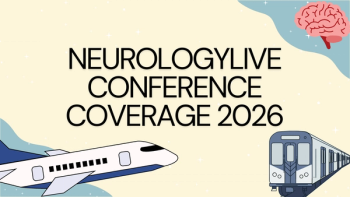
CGRP Receptor Agonists: Safety and Efficacy
Episodes in this series

A discussion on the safety and efficacy of various emerging small molecule CGRP receptor agonists.
Wade M. Cooper, DO: We talk about the newer small molecule CGRP [calcitonin gene-related peptide] receptor medications; these are medications that are antagonists to CGRP, meaning they block CGRP. That’s very different than a triptan.
A triptan activates the 5-HT1B/D receptors. The CGRPs turn off CGRP receptors when they’re used, meaning the adverse effect profile is going to be very different. We know that the CGRP small molecule medicines have very few adverse effects. Nausea is the only one that was reported in any consequence above placebo, and encountering that in my practice has been incredibly rare.
We also know that the CGRP small molecule medications can be quite effective for some people, including people who haven’t responded to triptans. Because they’ve got phenomenal adverse effect profiling to them, we also would have expected a lower efficacy, and that has been my experience, too. We know that these small molecule CGRP medicines, ubrogepant, rimegepant, can be quite effective, but they don’t quite have the punching power that we see with triptans sometimes, and don’t quite have the punching power we see with medications like lasmiditan. However, because it’s a different receptor group, people who haven’t responded to triptans might respond well to the small molecule CGRP medications.
Atogepant is a bit different. When we think about atogepant, this is more in the preventive concept, like how people would take topiramate for headache prevention. Topiramate has been around for several decades now. It’s a once or twice a day medication, you take it every day to achieve a steady state to lower your body’s susceptibility to turn on a migraine attack.
Atogepant is showing some promising data with its ability to prevent migraine. In a recently published trial, this included over 800 people who had migraine, they compared it to placebo, and they compared a dose of 10 mg once a day, all the way up to 60 mg twice a day. And what’s unique about atogepant is you had the same efficacy, almost, between the 10-mg once a day and the 60-mg twice a day dosing.
Adverse effects were minimal but did include nausea, just like the small molecule medicines for acute therapy. Interestingly, only 2% more people than the placebo group dropped out because of any kind of adverse event. Similar to the CGRP monoclonal antibodies, there was a drop in days of migraine, and a drop in days of headache. Essentially, in this study, people had an average of about 8 days of headache coming in, and about a 50% drop in headache, down to 4 days, was seen among almost every dose trialed in this, where the placebo dropped down about 3 days of migraine per month. So this was a very well-tolerated medication. Efficacy seems to match our other tablet prevention therapies, and there’s a pretty unique niche for this class of medicine.
Because of its minimal adverse effects, you could take this every day as a prevention, and you don’t have the fluctuating experience like you’d see with the once a month monoclonal antibodies. Remember, the once a month monoclonal antibodies have a very long half-life: 28 days, sometimes as long as 41 days half-life for the monoclonal antibodies. So once you’ve given it, that medication is going to have its effects for a long time, sometimes beyond 3 months. The small molecules are out of the body quickly.
One of the challenges we see with the monoclonal antibodies, those once a month injections for migraine prevention, is they tend to wear off at the end of the month, or you can’t amplify their experience around menses or other situational migraine attacks. They’re locked into a once a month dose, or sometimes a once every 3 months dosing, whereas atogepant might give us some flexibility, and it might also prevent against a wearing off effect at the end of the monthly cycle.
Amaal J. Starling, MD: It is such an exciting time to not only be a provider taking care of patients who have migraine, but also for patients with migraine because we do have many options. For the acute treatment of migraine, like I said before, we have had triptans alone for so long, but now we have other options. We have lasmiditan. We have gepants; we have 2 of them at this time that are FDA approved. We have rimegepant as well as ubrogepant. Rimegepant is a 75-mg dose once daily as needed for an acute migraine attack. In the clinical trial, it did achieve its primary end point of 2-hour pain freedom, as well as achieving the end point for the most bothersome symptom.
From an adverse effect profile, it seems to be very well tolerated, similar to the CGRP medications that have been used not only for acute but also preventive treatment options. I think the other very attractive thing with the small molecule CGRP medications is since we are targeting this pathway, not only for acute treatment of migraine but also for the prevention of migraine, not only with monoclonal antibodies but also with the small molecules in ongoing studies. There is this concept we are thinking about of, are there now going to be acute migraine medications that may not have the risk of medication overuse because they may have a preventive benefit? We don’t know the answer to that yet, but I think it’s an important thing to consider. Right now, it is only FDA approved for the as-needed treatment of migraine, but I think these are things we can consider when we are prescribing these medications in the clinical setting.
Newsletter
Keep your finger on the pulse of neurology—subscribe to NeurologyLive for expert interviews, new data, and breakthrough treatment updates.






































